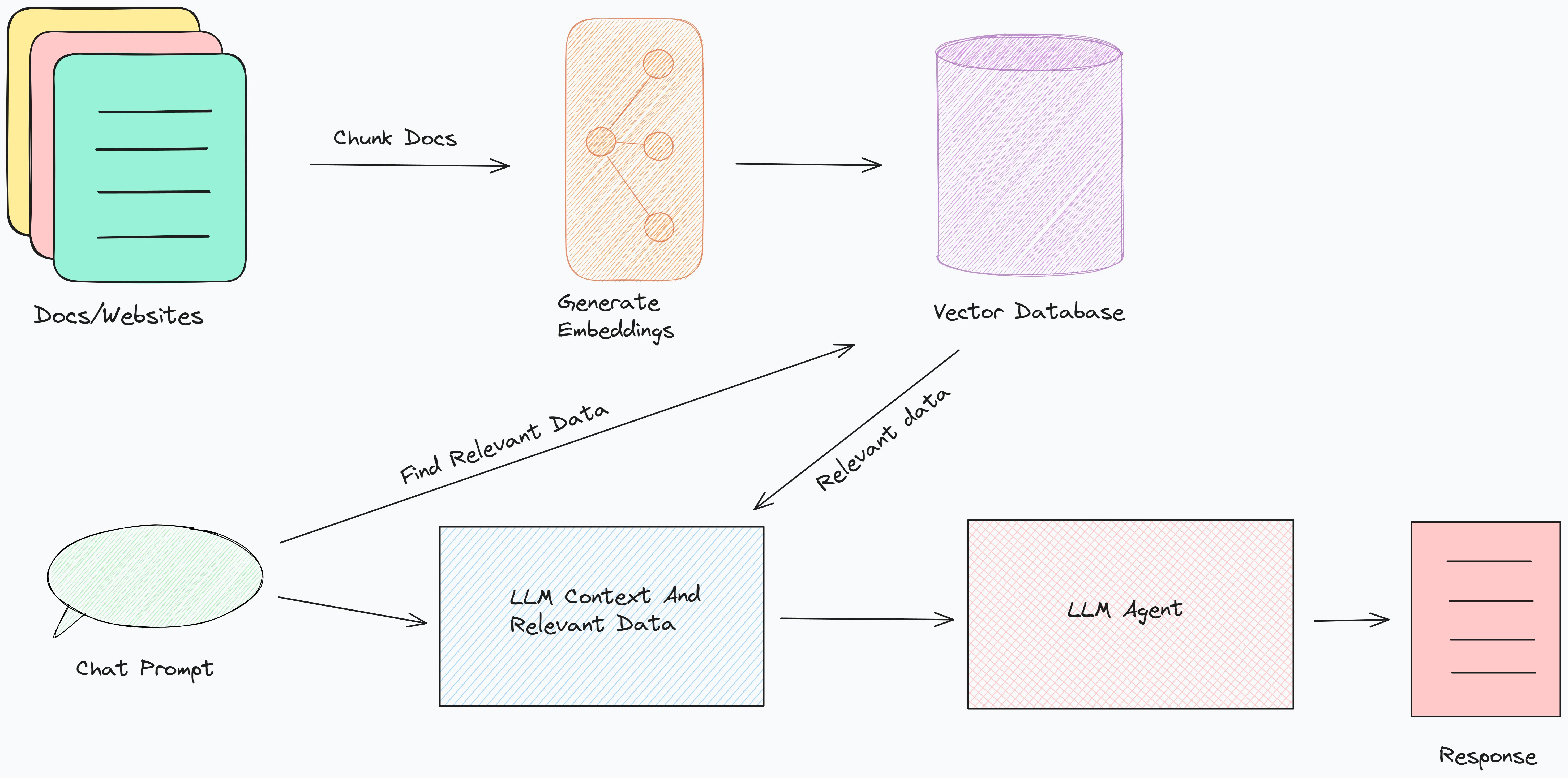What is RAG?
Retrieval-Augmented Generation (RAG) is a method that combines two components of AI: retrieval and generation. In simple terms, it retrieves relevant information from a large dataset and then uses that information to generate a coherent and contextually relevant response. This makes RAG particularly useful for tasks that require up-to-date and specialized knowledge.
How Does RAG Work?
 Retrieval-Augmented Generation Diagram embeds documents into vector database
Retrieval-Augmented Generation Diagram embeds documents into vector database
RAG operates in two main stages:
1. Retrieval Stage
The first stage involves retrieving relevant documents or pieces of information from a large corpus. This is achieved using a dense retrieval model, which is trained to find the most pertinent documents based on the input query. Think of it as a highly sophisticated search engine that digs through vast amounts of data to find exactly what you need.
2. Generation Stage
Once the relevant documents are retrieved, they are fed into a sequence-to-sequence (seq2seq) model. This model takes the retrieved information and generates a response that is informed by the context provided. The seq2seq model essentially synthesizes the information to produce a coherent output.
Why Use RAG?
RAG offers several advantages:
- Up-to-date Information: Unlike static models that rely solely on pre-trained data, RAG can pull in the latest information, making it ideal for knowledge-intensive tasks.
- Contextual Relevance: By retrieving specific documents related to the query, RAG ensures that the generated response is contextually accurate and relevant.
- Adaptability: RAG can be fine-tuned to specialize in various domains, making it versatile for different applications.
Applications of RAG
RAG can be applied in numerous fields, including:
- Customer Support: Providing accurate and contextually relevant responses to customer queries.
- Healthcare: Assisting doctors by retrieving and summarizing the latest medical research.
- Education: Helping students by generating answers based on textbook information.
- Content Creation: Assisting writers by generating contextually relevant content based on a vast knowledge base.
Challenges and Considerations
While RAG is a powerful tool, it does come with some challenges:
- Computational Complexity: Integrating retrieval and generation stages can increase computational requirements and latency.
- Data Quality: The quality of the retrieved information directly impacts the quality of the generated response. Ensuring a clean and relevant dataset is crucial.
- Fine-tuning: Fine-tuning RAG models to specific domains requires careful consideration and expertise.
Conclusion
Retrieval-Augmented Generation (RAG) represents a significant advancement in the field of NLP, offering a dynamic way to enhance the capabilities of language models. By combining retrieval and generation, RAG ensures that responses are not only accurate but also contextually relevant. As AI continues to evolve, RAG stands out as a promising approach to tackling knowledge-intensive tasks with precision and efficiency.